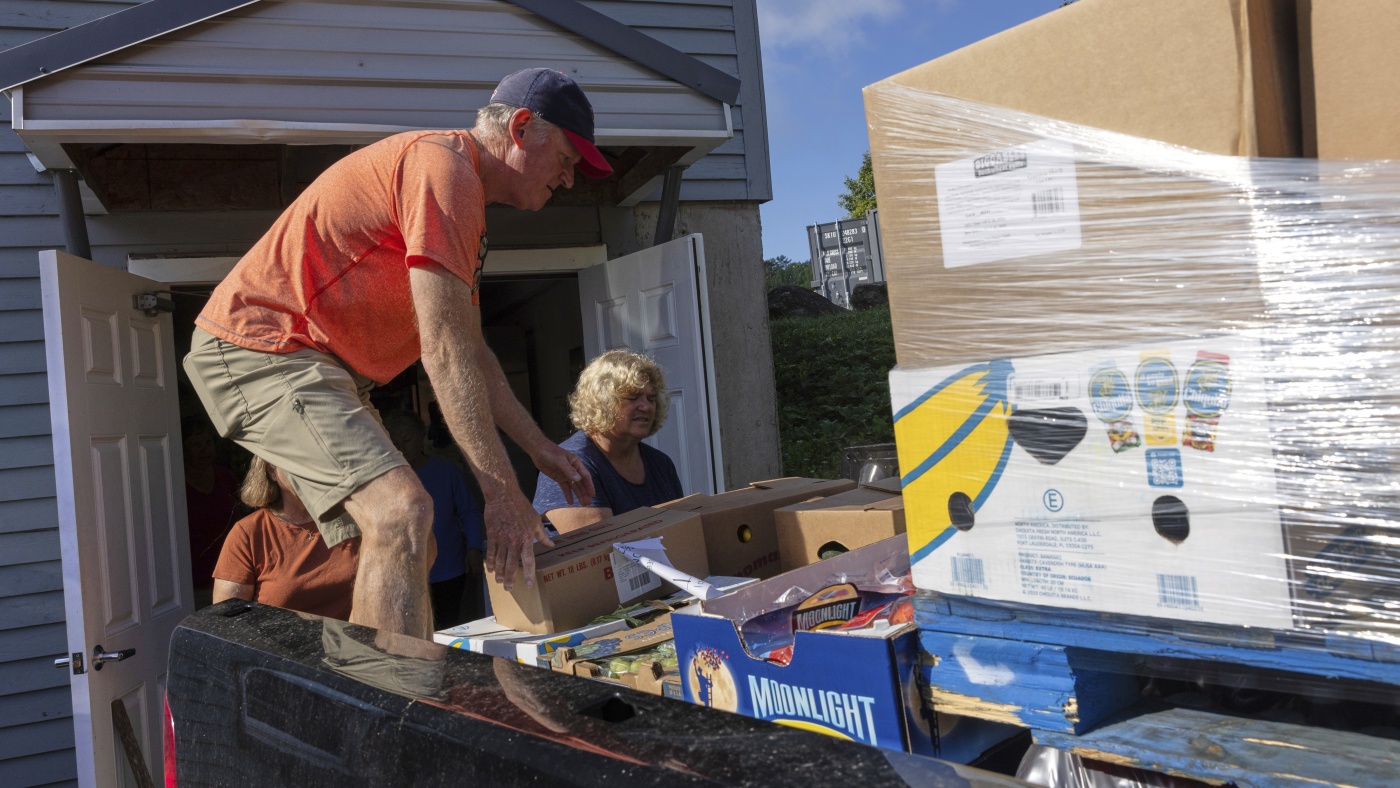
"Phylis Allen spends her days looking for things. She searches for potatoes at Sam's Club, cheap beets and ginger at Walmart and a local grocery store. She studies the weekly inventory from Good Shepherd, Maine's only food bank, for good deals on butter and cheese. Every Monday morning, she shops at three different stores, keeping lists of prices in her head and remembering what particular clients want."
"On a recent trip to Sam's Club, she was searching for affordable eggs. The diminutive 78-year-old food pantry director found them in a huge cooler. Stretching, she pulled two huge boxes off the top shelf seven dozen eggs each, $21 a box. "$2.82 a dozen," she said. "That's a good price for eggs." The eggs were destined for Neighbor's Cupboard, the food pantry in Winterport, Maine, that Allen has helped run for the past 17 years."
"Every Wednesday, she and a tightknit group of volunteers provide 25 to 30 families with heaping bags of food. Maine has long been one of the most food insecure states in New England. Directors of food pantries say the task of making sure people are fed is getting harder because of diminishing food supplies, increasing demand and an overwhelming reliance on volunteers, many of whom are retirees with ages up into their 80s."
Phylis Allen, a 78-year-old pantry director, shops three stores every Monday to find affordable staples and tracks prices and client preferences to maximize limited resources. Neighbor's Cupboard serves 25 to 30 families weekly with donated and purchased food. Maine remains among New England's most food-insecure states, and rural Waldo County had about one in seven residents food insecure in 2023. Pantry directors report rising demand, dwindling food supplies, and an overwhelming reliance on volunteers, many of them retirees in their 80s. Federal shifts include the USDA's decision to stop publishing food insecurity statistics after October and earlier cuts exceeding $1 billion from food assistance programs.
Read at www.npr.org
Unable to calculate read time
Collection
[
|
...
]